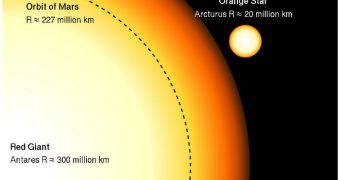Astronomers looking for massive stars in the Milky Way believe they may have finally found a population of these immense objects near the galactic plane. Experts have been looking for them using a large number of X-ray and infrared observatories.
The thing about such a population of stars is that they release massive amounts of X-ray radiation, which should make them visible to dedicated telescopes. For some time, experts believed that the X-ray sources they saw at the core of our galaxy were weird objects, but definitely not stars.
According to the new work, it would appear that the radiations indeed emanate from massive stars. Observations conducted in optical and radio wavelengths confirmed the discovery, and therefore helped clear a long-standing mystery in astronomy.
Using the same methods, scientists were able to identify two more massive stars in the Milky Way plane recently, by using the XMM-Newton X-ray observatory. The instrument was built and launched by the European Space Agency (ESA).
In total, astronomers have found 4 such tremendously large stars until now. Each of them is at least 25 times heavier than our Sun. They can be found between 7,500 and 18,000 light-years away from our planet, which is relatively close in astronomical terms, Daily Galaxy reports.
Even if they appear so large at this point, these behemoths will not last. Massive stars of their type only live for several millions of years before finally exhausting their hydrogen fuel and exploding.
They typically end their lives in a powerful supernova blast. When this happens, they shed the outer layers of their atmosphere, which then go on to form nebulae. Their cores collapse due to their own gravitational pulls, and form either neutron stars or black holes, depending on their initial mass.
Discovering these massive stars in the galactic plane was not an easy task. The central regions of the Milky Way are shrouded in gas and dust, which makes observations in visible and ultraviolet wavelengths nearly impossible.
But infrared and X-ray telescopes can easily pierce through this cover. This is why astronomers are using XMM-Newton and the NASA Chandra X-ray Telescope for such observations. The bright, energetic light massive stars emit can be easily distinguished from the background noise.
The first survey of this nature was conducted by the Advanced Satellite for Cosmology and Astrophysics (ASCA), but its limited spatial resolution only managed to identify around 55 X-ray sources out of 160 potential candidates.
The recent observations were meant to expand and improve on ASCA results. Chandra was able to accurately identify 4 X-ray sources as massive stars, and is now in the process of doing the same for other sources as well.

 14 DAY TRIAL //
14 DAY TRIAL //